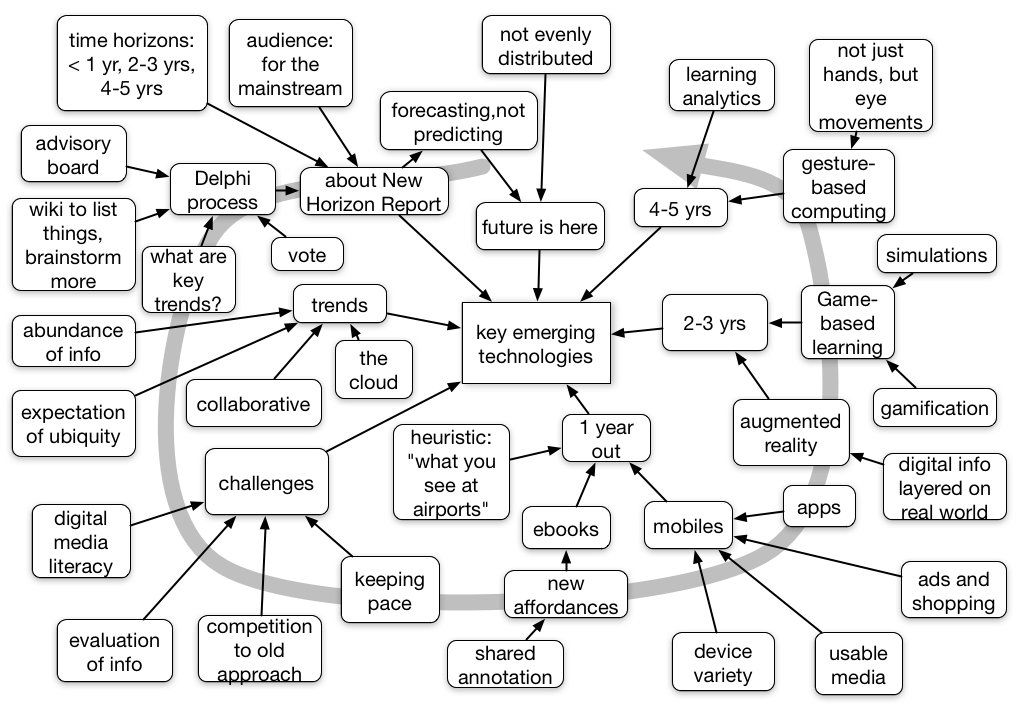This evening I had the delight to hear Alan Levine present the New Media Consortium’s New Horizon Report for 2011 to the ASTD Mt. Diablo chapter. As often happens, I mindmapped it. Their process is interesting, using a Delphi approach to converge on the top topics.
For the near term (< 1 year), he identified the two major technologies as ebooks and mobile devices (with a shoutout for my book: very kind). For the medium term (2-3 years), he pointed to augmented reality and game-based learning (though only barely touching on deeply immersive simulations, which surprised me). For the longer term (4-5 years), the two concepts were gesture-based computing and learning analytics.
A very engaging presentation.
